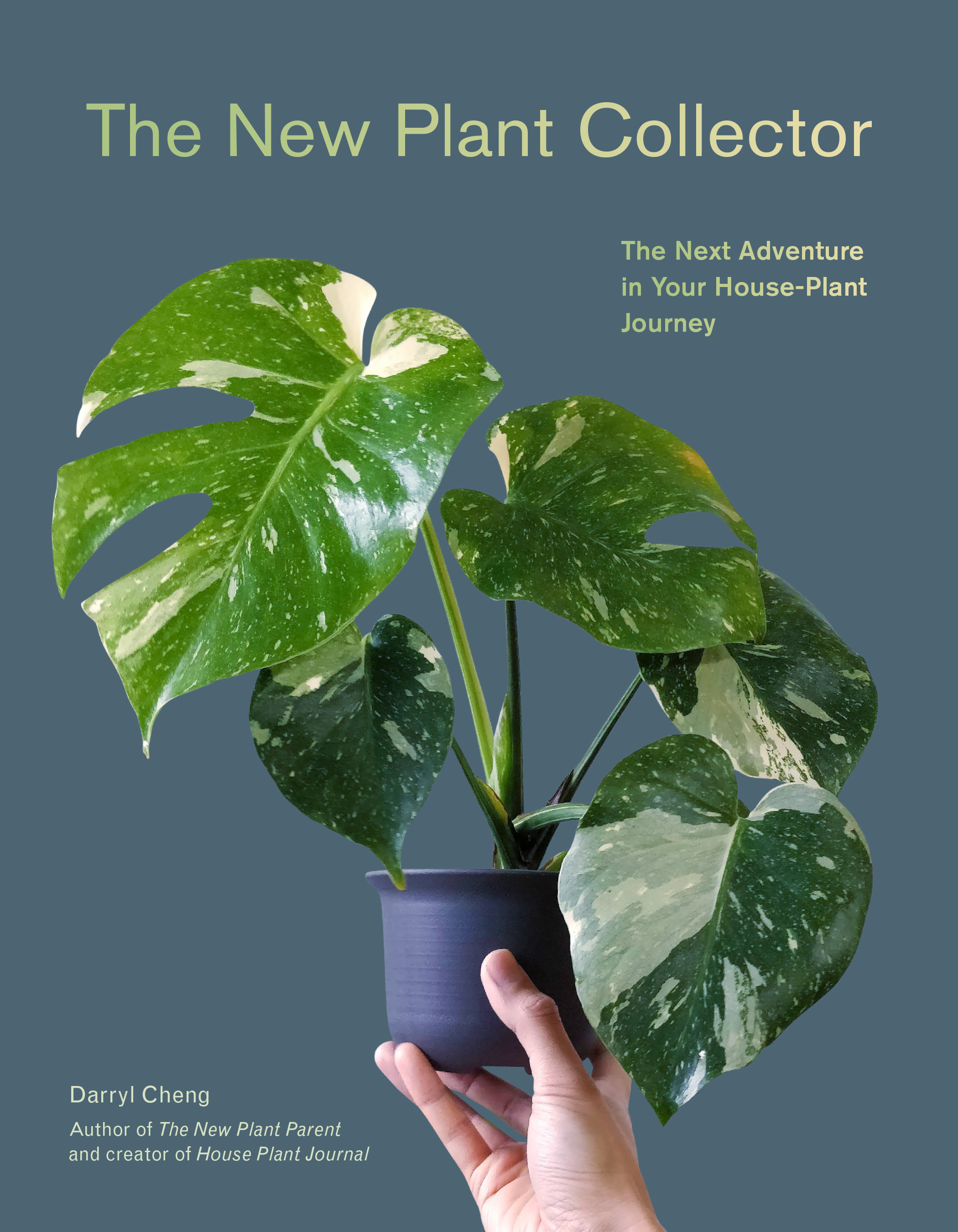Disclaimer: this is a paid partnership between Soltech Solutions and House Plant Journal. The products were given to House Plant Journal to provide an honest review.
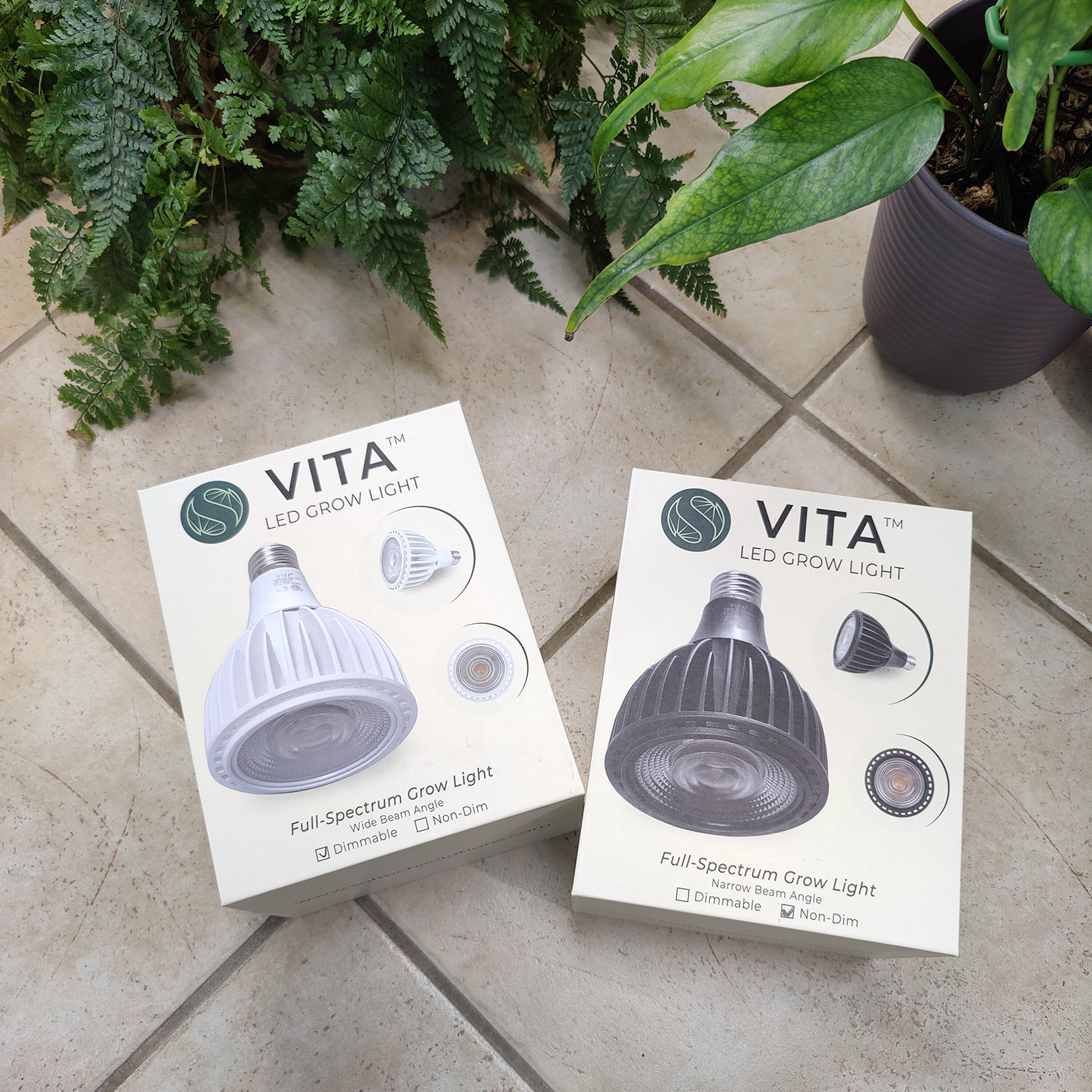
Plant parents of today should rejoice from two converging trends: (1) the fact that LED technology has come a long way – cheaper and highly effective; (2) light requirements for ornamental foliage plants (what we broadly call “houseplants”) are modest in comparison to agricultural plants.
The fact that there are so many choices for grow lights means the products will continue to evolve to suit the demands of today’s houseplant owners. One concern that Soltech Solutions addressed: the need for a visually appealing grow light option – their Aspect grow light is sleek and powerful enough to hang at a “normal” distance from your houseplants. I previously reviewed their 40W Aspect grow light in this article.
The next product in their lineup is the Vita bulb – a grow light that can be used in a standard E26 lighting fixture. The Vita grow light bulb takes the same great LED technology in their Aspect grow lights but with the E26 base, you can install the bulb into an existing lamp.
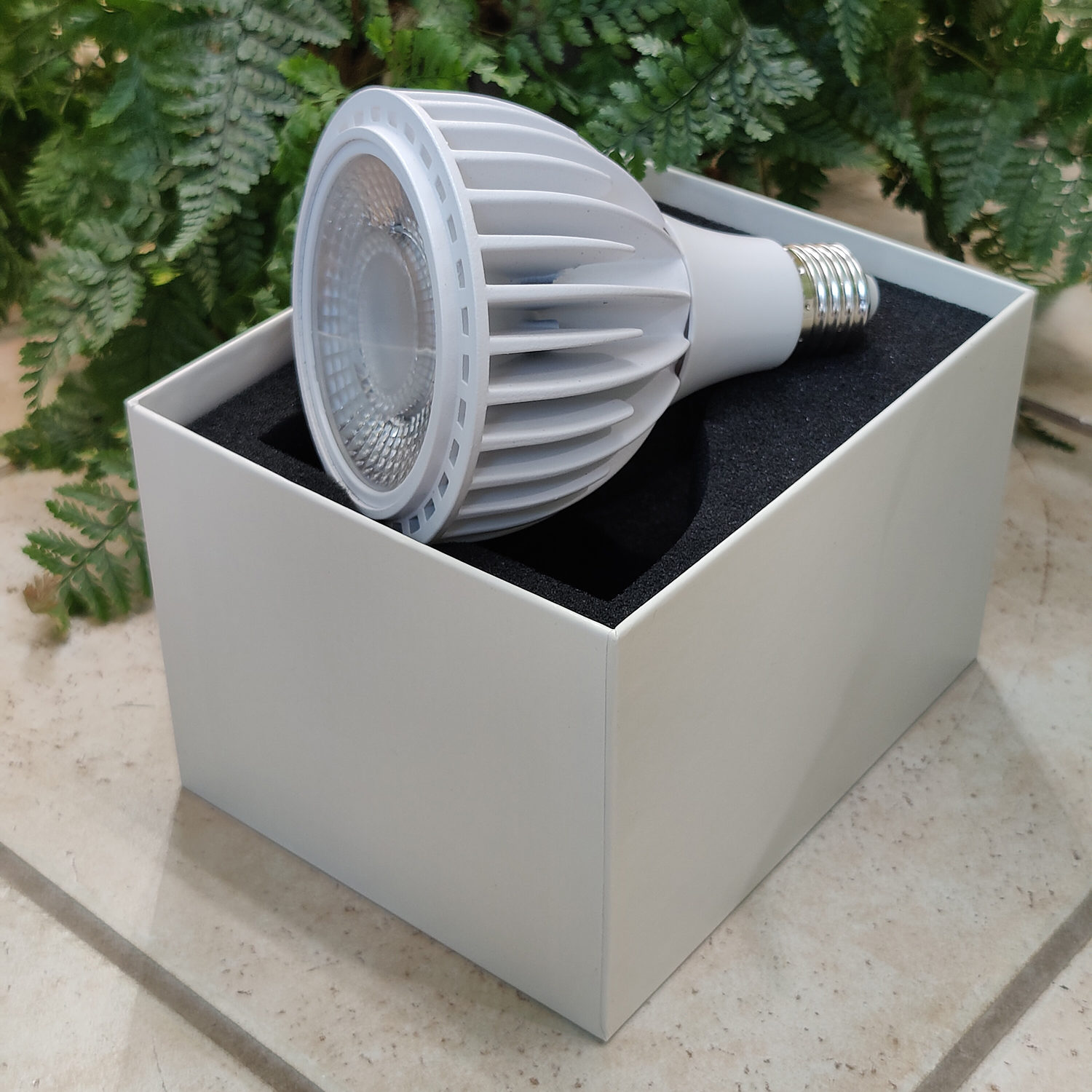
Get 15% off a Soltech Solutions grow light with my code: hpjsoltech15
(House Plant Journal is an affiliate partner with Soltech Solutions)
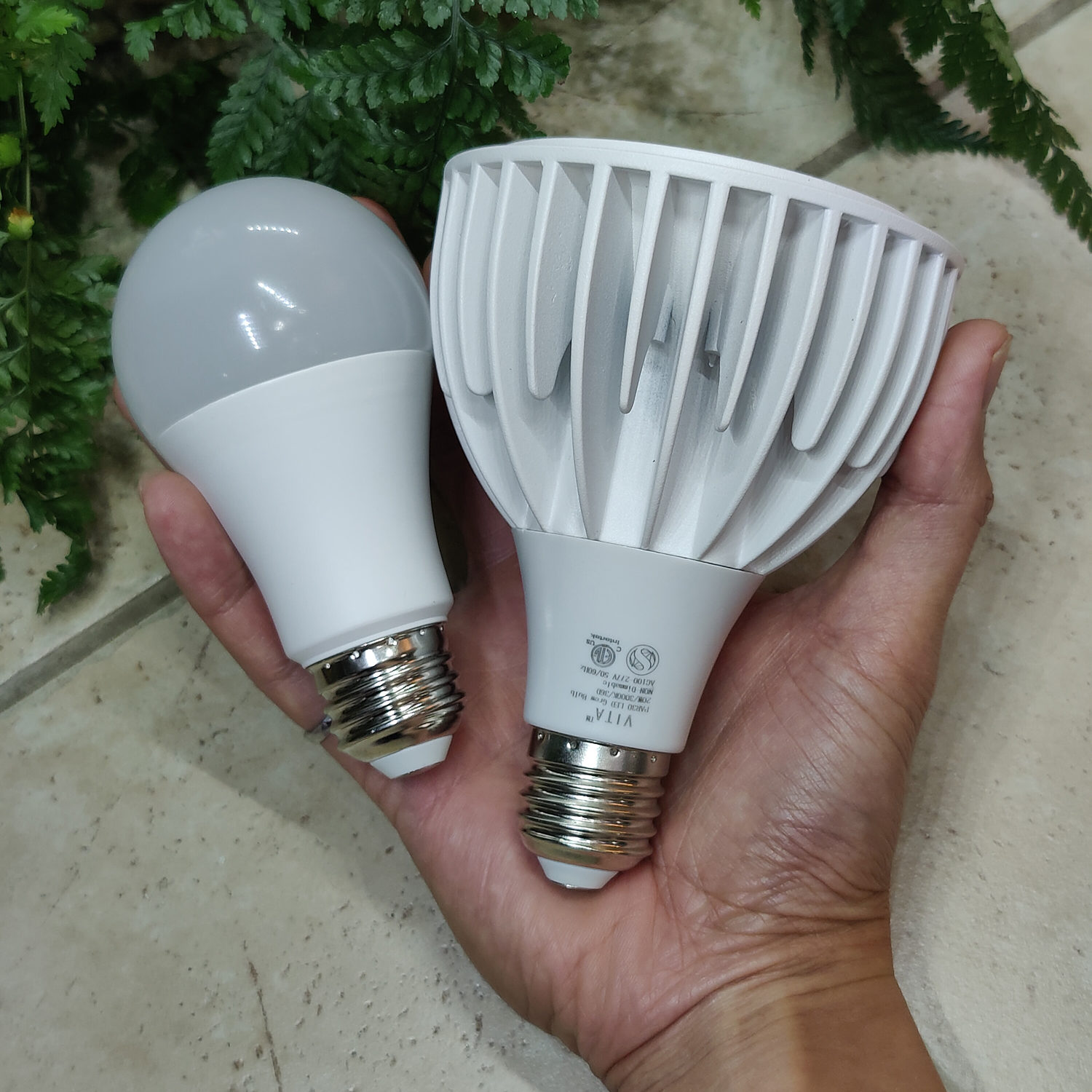
Light Measurements
Spectral Analysis
The Spectral Power Distribution (SPD) tells us the strength of the light relative to each wavelength. The SPD graph is not something your typical light meter can tell you but it’s fun to know the shapes of different types of light.
Here’s the SPD for the Soltech Vita grow light:
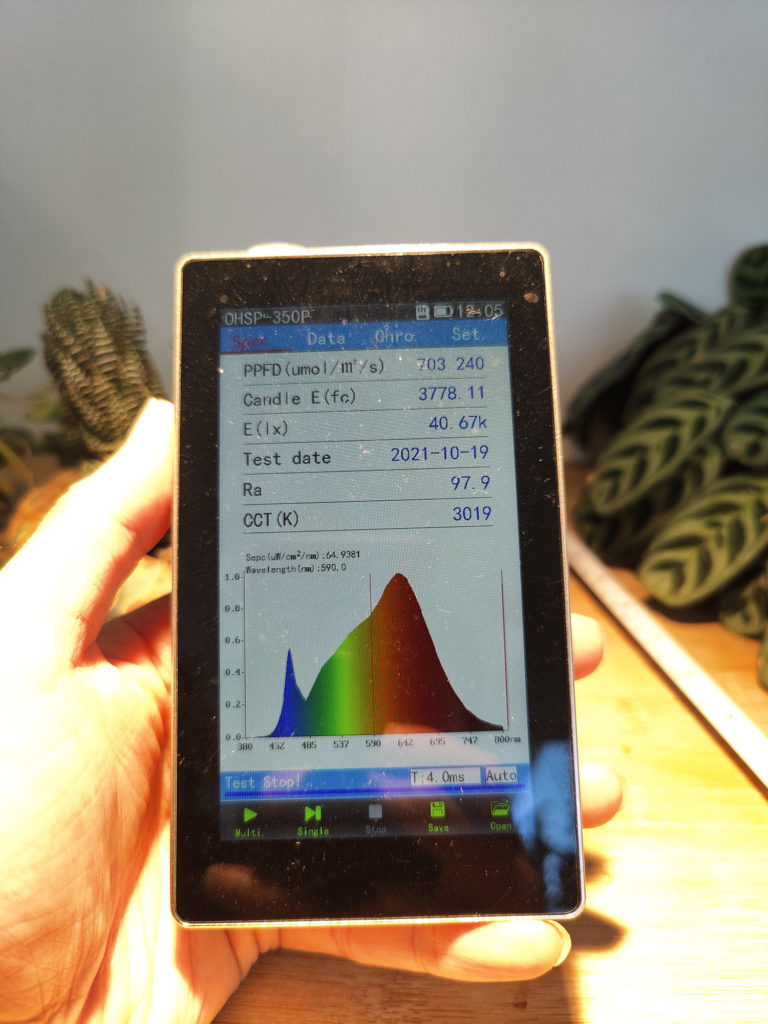
And just for fun/curiosity, here’s fluorescent light and direct sun (outdoors, unobstructed):
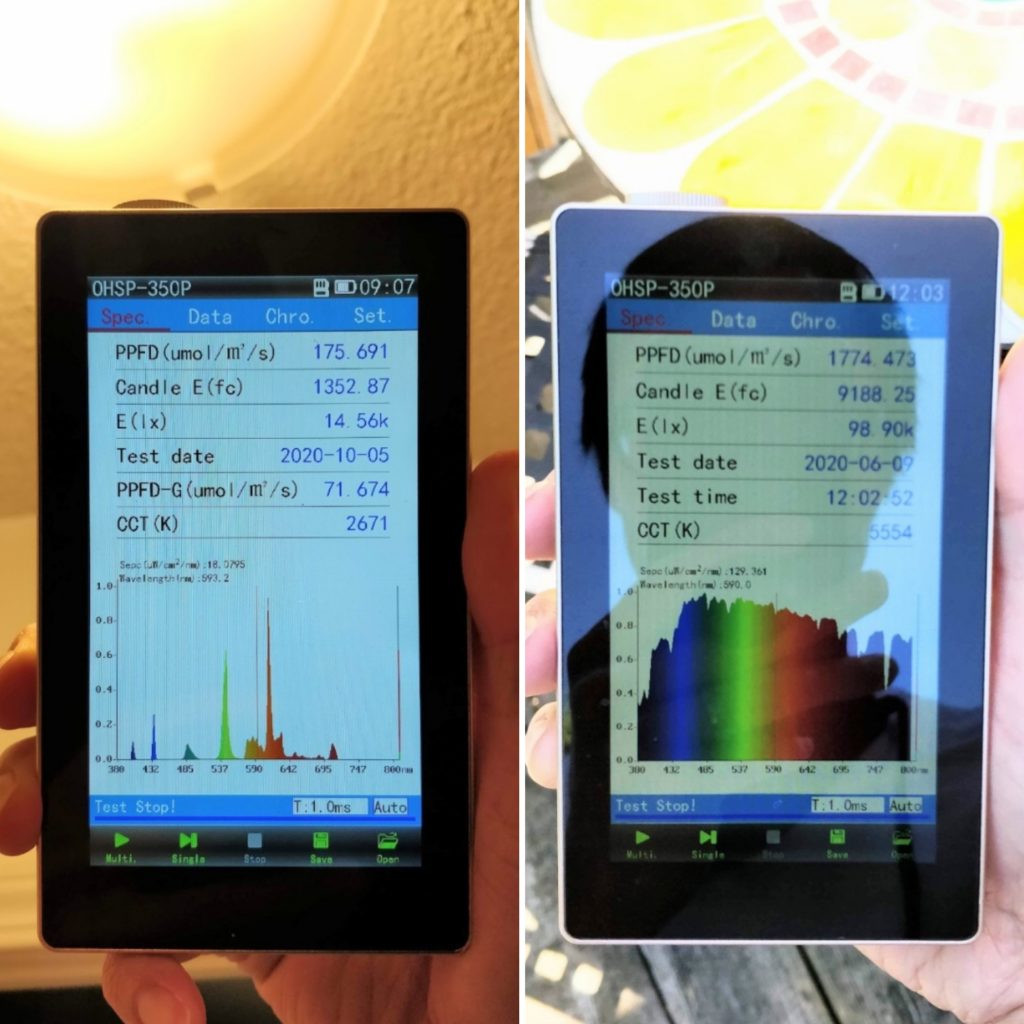
Light Intensity
As with all light sources, small changes in distance result in large changes in intensity. This is why I’m always saying you need a light meter – because your eyes will not FEEL the difference in moving just a few inches farther from the light, but a light meter will detect this.
Resource: measuring light and light requirements by plant type
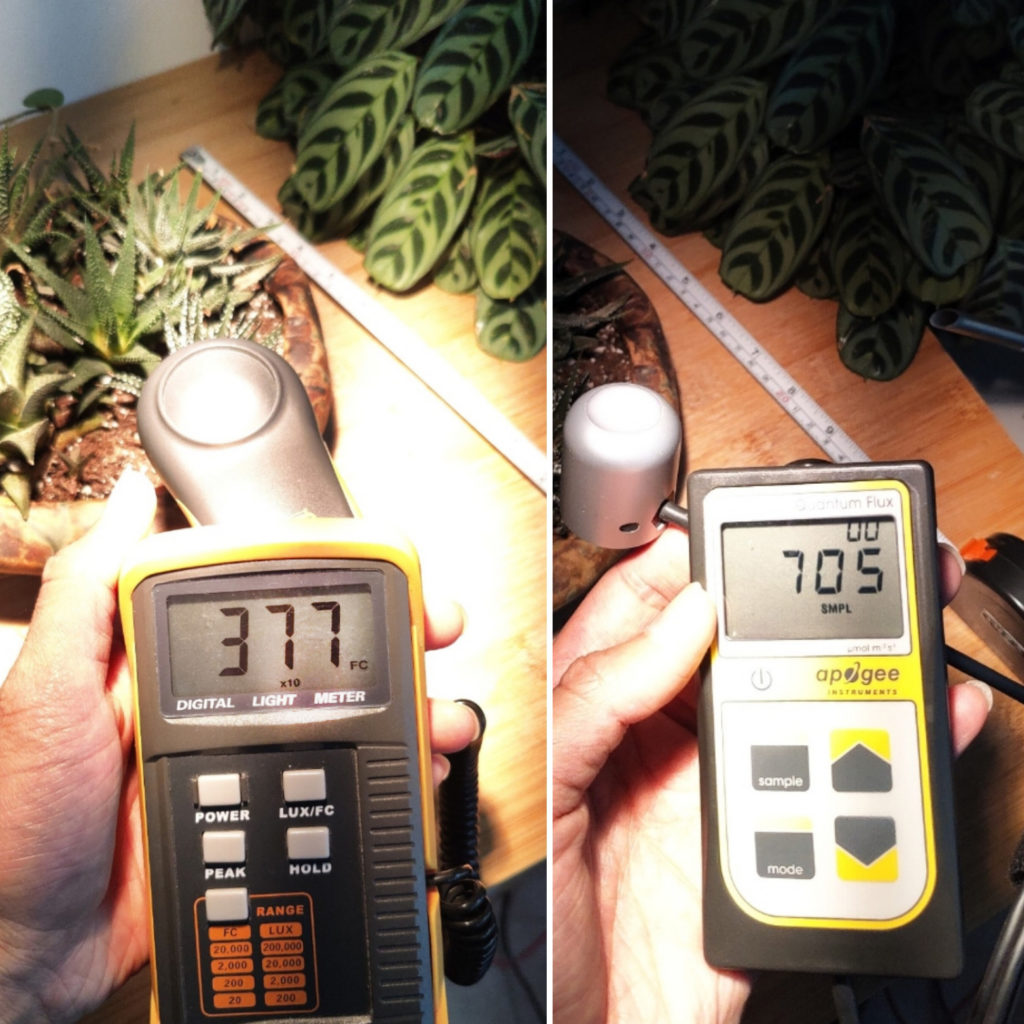
Here are intensity vs distance graphs using both a traditional foot-candle meter and a PAR meter. Note that I started measuring from 12 inches away because I wouldn’t recommend putting a plant any closer.
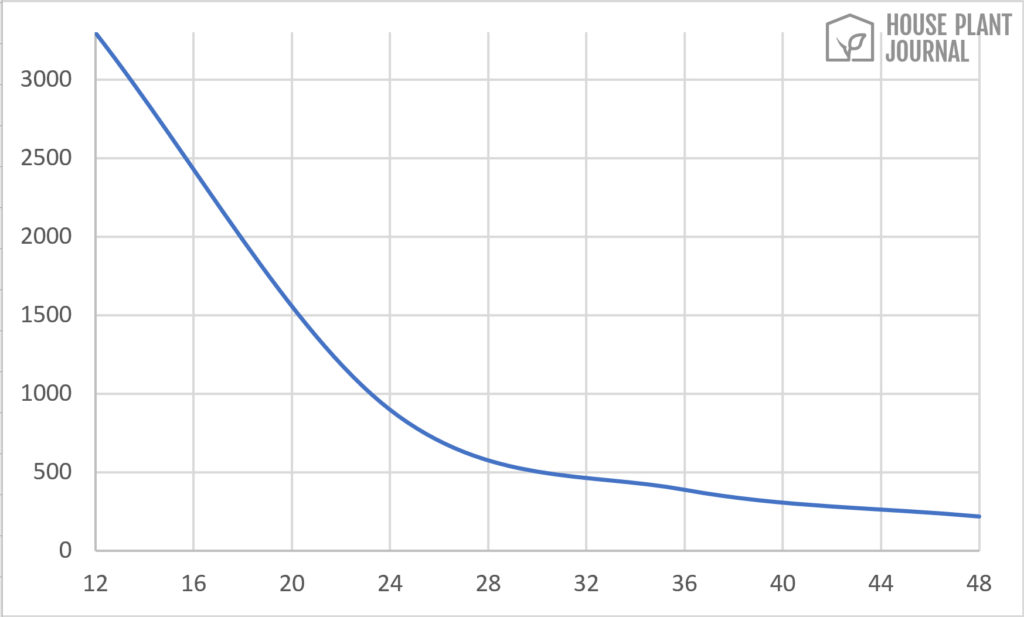
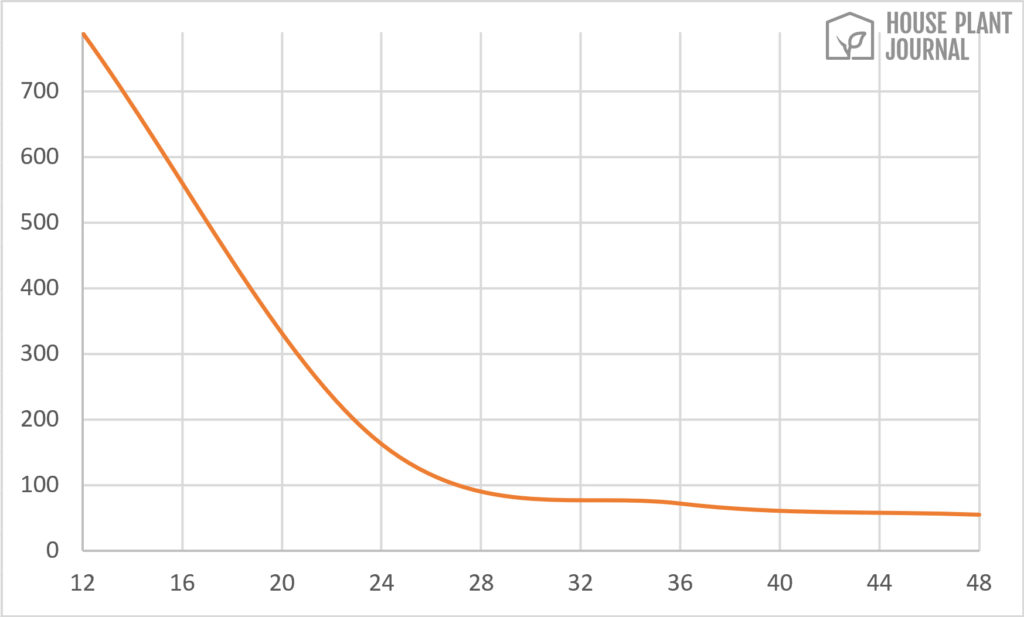
Usage Guidelines
Rather than go into all the detailed calculations for the daily light integral (DLI), I’ve picked 3 examples of how best to use the grow light in terms of distance and duration.
(If you want to see the calculations, they’ll be at the end of the article)
Super useful table: Grow Light Strength Recommendations by Plant
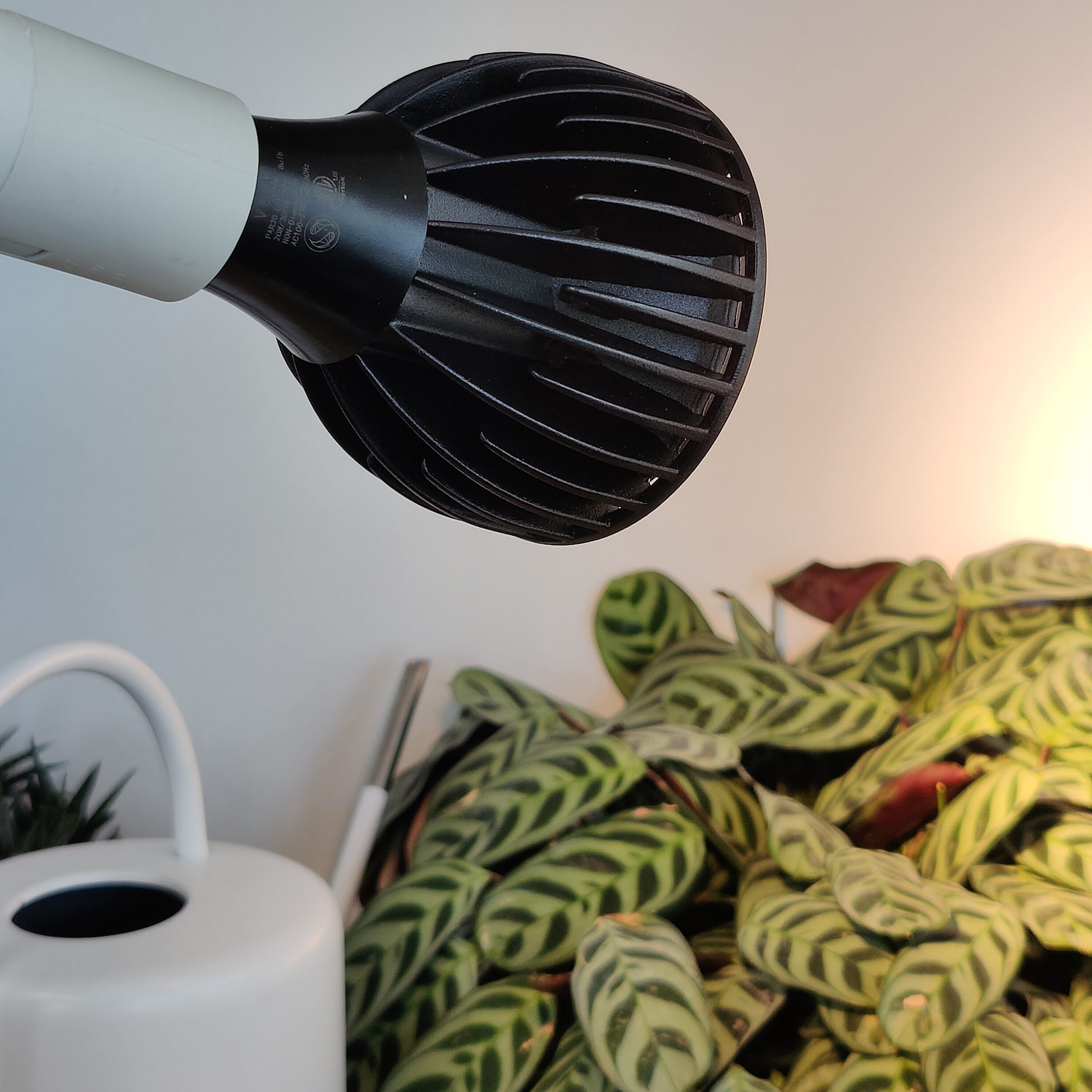
Keeping a small group of cacti/succulents thriving through winter:
You can use the grow light to supplement the reduced hours of sun during the winter to keep your cacti and succulents growing well. Position the plants no farther than 16” away and keep the light on for 8-12 hours a day – resulting DLI: 16-24 mol/day. (1)
Supplementing light for a Fiddle Leaf Fig or Bird of Paradise (large, “high light” plants):
The challenge with these plants is their large size combined with high light demands (unless you want to watch it lose all its leaves one by one without growing new ones). When you move a grow light farther away, the coverage area increases but the intensity decreases significantly. For these plants, I would position the light no more than 3 feet away from the top of the plant and keep the light on for 12-16 hours a day – resulting DLI: 3.5-4.6 mol/day. (2)
Light for one large Monstera deliciosa or several “low light” aroids (pothos, Anthurium, Scindapsus):
If your Monstera doesn’t sprawl wider than a few feet across or, in the case of several smaller aroids – you can group them together, the grow light would work well at around 4 feet away and kept on for 12-16 hours a day – resulting DLI: 2.6-3.5 mol/day. (3)
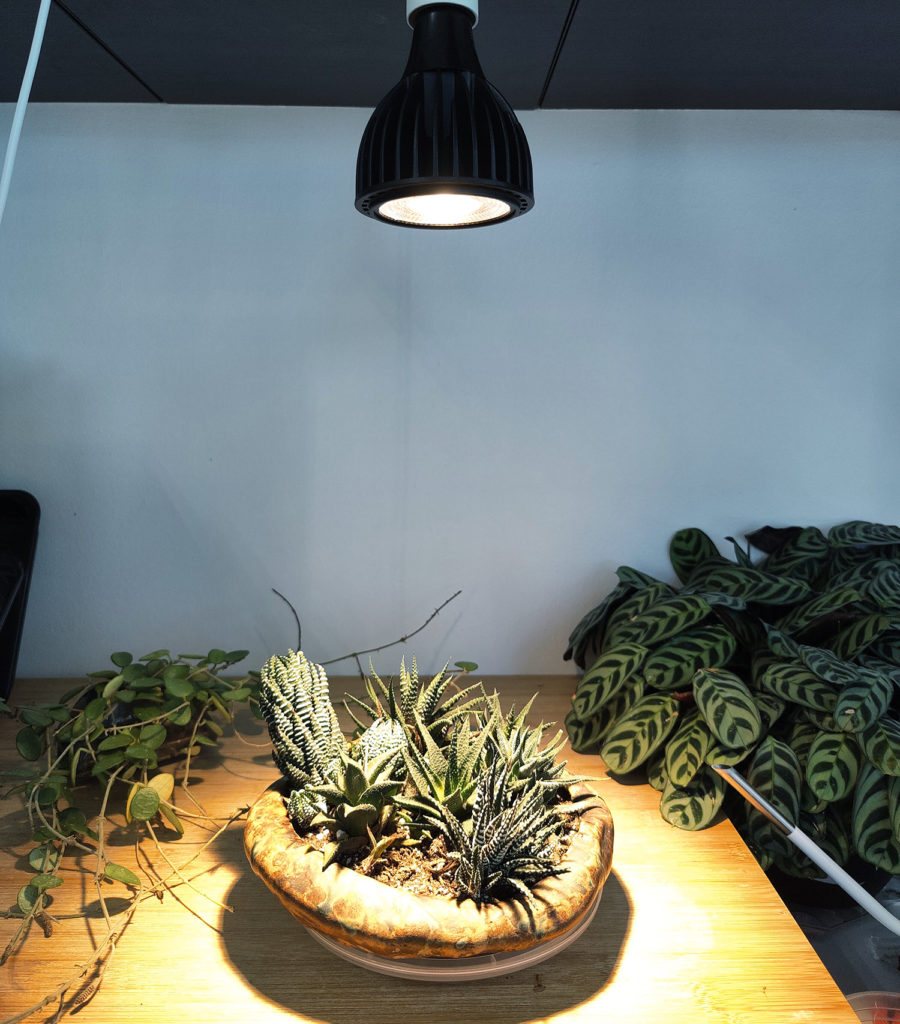
Conclusion:
The Vita Grow Light by Soltech Solutions is a powerful and versatile bulb suitable for many indoor growing applications. The warm white glow is also comfortable on the eyes so you won’t mind having them on even as an ambient light source at night.
Get 15% off a Soltech Solutions grow light with my code: hpjsoltech15
(House Plant Journal is an affiliate partner with Soltech Solutions)
“Show your work!”
(1) DLI 16-24 mol/day:
The PPFD at 16” away was around 550 µmol/s/m²
Converting this to an hourly rate: 550 x 60 x 60 = 1,980,000 µmol/h
Converting µmol to mol: 1,980,000 / 1,000,000 = 1.98 mol/h
Multiplying by 8 to 12 hours a day: 1.98 x 8 = 15.8; 1.98 x 12 = 23.8
Rounding: 16 to 24 mol/day
(2) DLI 3.5-4.6 mol/day:
The PPFD at 3 feet away was around 80 µmol/s/m²
Converting this to an hourly rate: 80 x 60 x 60 = 288,000 µmol/h
Converting µmol to mol: 288,000 / 1,000,000 = 0.288 mol/h
Multiplying by 12 to 16 hours a day: 0.288 x 12 = 3.4 mol/day; 0.288 x 16 = 4.6 mol/day
(3) DLI 2.6-3.5 mol/day:
The PPFD at 4 feet away was around 60 µmol/s/m²
Converting this to an hourly rate: 60 x 60 x 60 = 216,000 µmol/h
Converting µmol to mol: 216,000 / 1,000,000 = 0.216 mol/h
Multiplying by 12 to 16 hours a day: 0.216 x 12 = 2.592; 0.216 x 16 = 3.456
Rounding: 2.6 to 3.5 mol/day
Article: references for DLI requirements by plant
If you’re looking for a logical and sensible approach to houseplant care, I’ve created the perfect online course for you:

